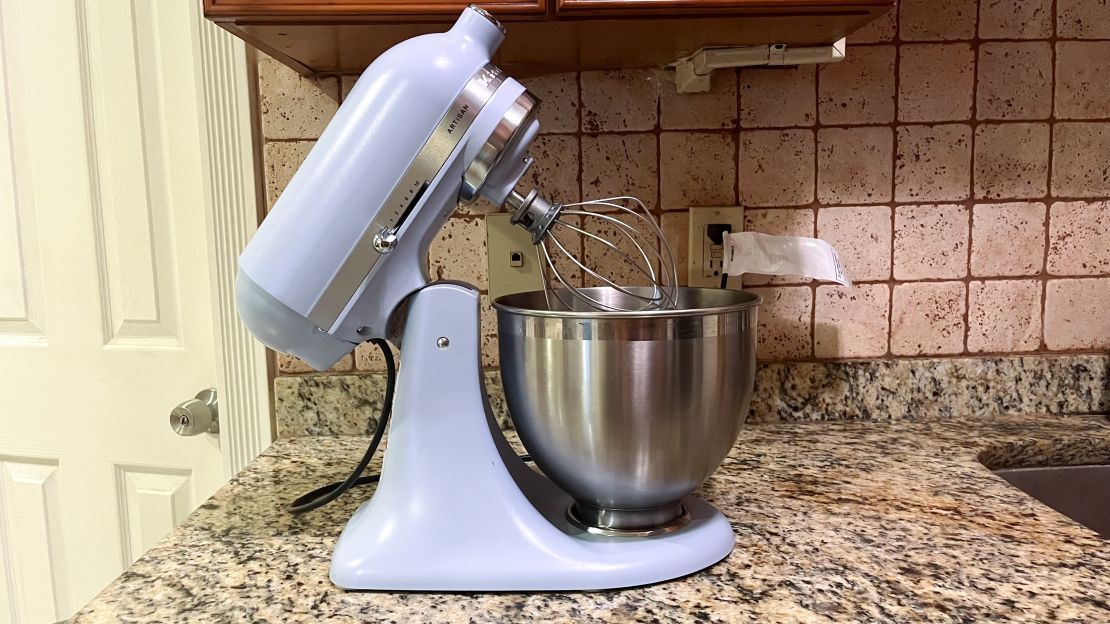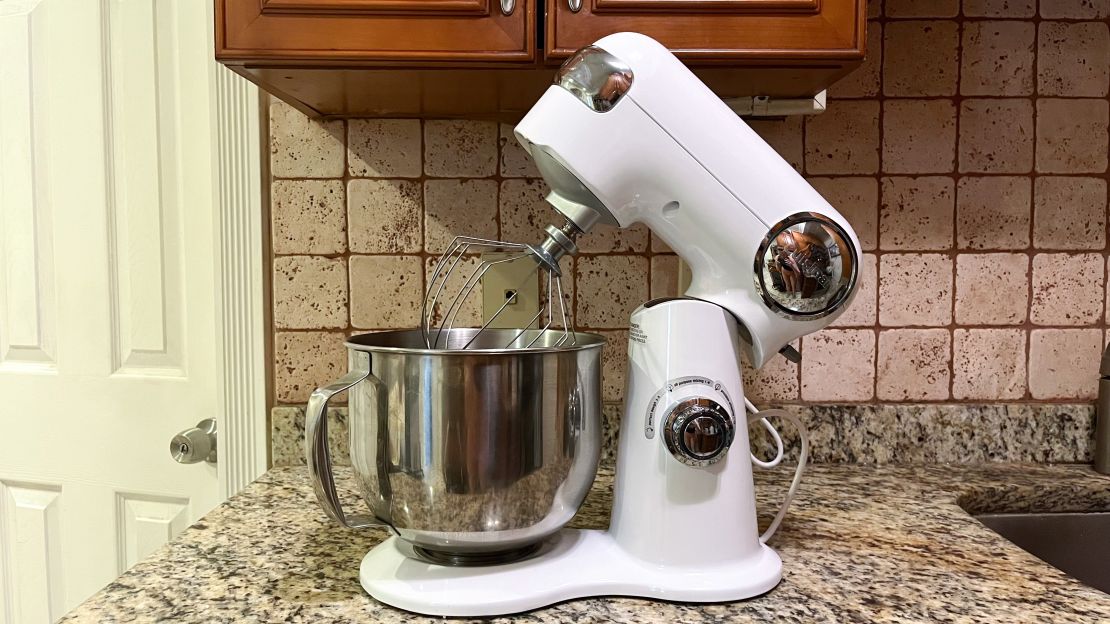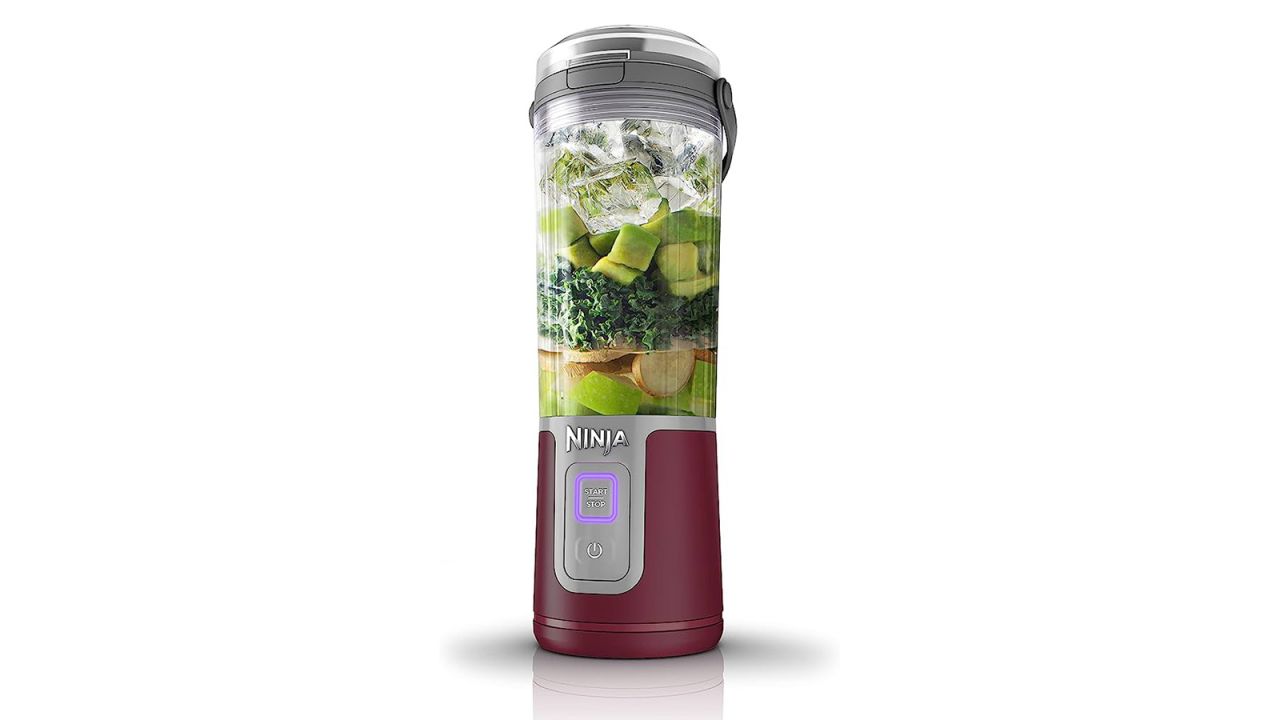This article is part of our series?Battle of the Brands, in which we compare category-leading products to their counterparts to determine which are actually worth your money.
Many home bakers dream of the day when they can finally add a stand mixer to their baking lineup. A workhorse of the home kitchen, a stand mixer can save you precious time and energy when you’re mixing up your favorite batters, doughs and toppings.
While KitchenAid is dominant when it comes to stand mixers, I wondered if the more affordable Cuisinart version could deliver the same performance for a fraction of the price. With my apron laced, oven preheated and baking essentials at the ready, I tested the two mixers side by side to see which was more blue ribbon-worthy.
KitchenAid Artisan Series vs. Cuisinart Precision Master at a glance
The KitchenAid Artisan Series mixer is a premium appliance that not only creates consistently well-mixed batters but it’s a beautiful addition to any kitchen countertop.
The Cuisinart Precision mixer is a simple-to-use machine that will help ease mixing and kneading burdens for more efficiency in your home kitchen.
Quick comparison
| Weight | 26 lbs. |
21.5 lbs. |
|---|---|---|
| Dimensions | 14.1 in. x 8.7 in.?13.9 in. |
14.17in. x 7.87 in. x 14.13 in. |
| Attachments | Stainless steel bowl, coated flat beater, coated dough hook, 6-wire whip and pouring shield |
Stainless steel bowl, chef’s whisk, dough hook, flat mixing paddle and splash guard with pour spout |
| Bowl size | 5 qt. |
5.5 qt. |
| Speeds | 10 |
12 |
| Power | 325W maximum |
500W motor |
| Colors | 29 colors |
13 colors |
| Warranty | 1-year limited with optional extended service plans |
3-year limited |
| Price | $450 | $200 |
The KitchenAid has more countertop appeal
I’m not someone who generally fawns over countertop appliances, but the KitchenAid Artisan Series mixer is truly stunning. The sleek design, matte finish and, in this case, soft Blue Salt color makes me feel like I’m working in an elegant patisserie, even if in reality I’m standing in a cramped corner of my NYC kitchen.
With the KitchenAid priced at $200 more than the Cuisinart mixer, you can definitely see and feel the premium features your buck is going toward: solid metal construction, baked enamel coating and sturdy latches for the speed and locking mechanisms. The Cuisinart Precision Master mixer isn’t shabby either with stainless steel attachments and a die-cast metal construction. Though the shell of the machine is hard plastic, which just doesn’t quite have the same high-end feel as the KitchenAid.

Frequent bakers can leave these mixers out on the countertop for easy access as they’ll slide underneath your upper cabinets when the heads are down. The KitchenAid mixer is a few pounds heavier than the Cuisinart, and while that gives it a nice sturdy base for powerful mixing, it does make it a bit more taxing to lug out of a cabinet or pantry.
TL;DR: The KitchenAid is nicer to look at with more color options.
Both are easy to use, but the KitchenAid is a bit more functional
Initially, I found the Cuisinart mixer easier to use. The 12-speed dial moved easily, and I liked that the smaller speed increments allowed me to really fine-tune how aggressive I wanted the mixing to be. The KitchenAid speed lever was a bit stickier at first, and although it says it has 10 speeds, I had a hard time setting the speed to an odd number, as the machine only numbers the speeds in increments of two. As a result, I really experienced only seven main speed options instead of 10 on the KitchenAid.
Overall, the KitchenAid mixer seems to perform better at high speeds, mixing at a faster pace and with more force than the Cuisinart, but the Cuisinart has more slow speeds that give you better options for gently combining ingredients.
Both machines have a latch that controls the tilt of the mixer head. On the KitchenAid, the control is a simple locking lever on the side of the machine that holds the head in place when switched to locked, but when unlocked, you can freely move the head up or down. On the Cuisinart, the head lock is at the back of the machine. It locks the head down in the mixing bowl and automatically locks the head up when you lift it up too, meaning you have to push the lever again to lower the head back down into the bowl. Over time, I found it kind of annoying to have to reach to the back of the machine to raise and lower the head when I was using the Cuisinart, and I preferred the layout of the KitchenAid mixer, since the speed and locking levers were closer to me as I was shuffling ingredients around.
Each mixer comes with a stainless steel bowl that locks into the mixer’s base and three mixing attachments. I did think the KitchenAid’s attachments required a little less coordination to slip on and off than the Cuisinart’s, but both still attached in seconds. Both mixers also have a space on the front of the head for adding additional attachments like pasta cutters or veggie spiralizers, though I did keep accidentally knocking off the magnetic cover for this part on the Cuisinart mixer.

The mixers do produce a little bit of noise, but neither machine was louder than the other. They’re also very simple to clean. The mixing bowl and attachments, with the exception of the whisk head, are dishwasher-safe and the machines themselves easily wipe clean with a soft cloth and some water.
TL;DR: Both machines are easy to use straight out of the box. Though, the KitchenAid’s design makes more sense and lets you add ingredients and change attachments more seamlessly.
Both can easily mix an array of recipes, but the KitchenAid gets fluffy results faster
To get the machines warmed up, and get myself familiar with them, I started by running each through a mixing gauntlet with recipes that used each of the three included attachments: a vanilla loaf cake for the paddle mixers, vanilla buttercream frosting for the whisks and pizza dough for the dough hooks.
The Cuisinart easily handled all three recipes, beating together butter and sugar, and combining wet and dry ingredients without spraying over the top of the bowl. The KitchenAid did the same, creating an evenly combined batter with no lumps. I was most impressed by how each machine brought together a plush ball of pizza dough in under 10 minutes, saving my hands from manually kneading and creating a floury mess on the counter.
To really get a sense of the differences between the machines, I also tested them side by side for a round of brown butter espresso chocolate chip cookies. Again, both creamed the butter and sugar together well and whipped in the eggs with ease. Once I added the dry ingredients and the batters really started to come together, I felt that the KitchenAid mixer was doing a better job fully mixing everything. The KitchenAid has a narrower bowl where the paddle can easily reach almost every spot. Because it had less space to cover, the KitchenAid mixer seemed to be doing more rotations around the bowl than the Cuisinart when both were set at a similar speed,?resulting in more thoroughly mixed ingredients. I also didn’t need to scrape down the bowl as much.
With the Cuisinart, the bowl is a bit wider, which is great for preventing ingredients from splashing out at higher speeds, but I do think the mixing head had a harder time covering the whole area of the bowl. I often had to scrape down the sides of the bowl toward the center?to ensure all the ingredients were mixed.

But the most important question: Did the recipes taste any different? I would say yes. The KitchenAid cookies had a much airier texture. All the sugars had been dissolved and mixed throughout the batter, producing?a soft, light and balanced treat. The Cuisinart cookies were delicious as well but had a slightly denser feel on first bite.
As a final test, I also ran a batch of whipped cream through each mixer. If you, like me, have ever been reduced to tears by trying to turn cream into whipped cream by hand, you’ll appreciate just how easily a stand mixer gets the job done. Both creams were fully whipped in about two minutes, but the KitchenAid was slightly quicker and again produced a cream that was lighter and fluffier than the Cuisinart did.
TL;DR: Both mixers will save you time and energy in the kitchen, but the KitchenAid will get your recipes done slightly quicker and with consistently fluffier results.
Bottom line
At the end of the day, if you just want something to make home baking easier, both the KitchenAid and the Cuisinart are going to perform much better than a standard mixing bowl and spoon.
For the serious bakers who want professional performance at home, the KitchenAid is still our top pick. It’s going to get you the optimal results time after time — and with no fuss. The performance will come at higher cost, but since it’s beautiful and easy to use, you’ll likely find yourself reaching for it more and more in your home kitchen.
For occasional home bakers and experimenters, the Cuisinart is going to be your best bet. For $250 or less, you’ll be hard-pressed to find something that gives you the versatility and ease of this machine. As long as you follow the right recipe, you’ll end up with some truly tasty results.


















